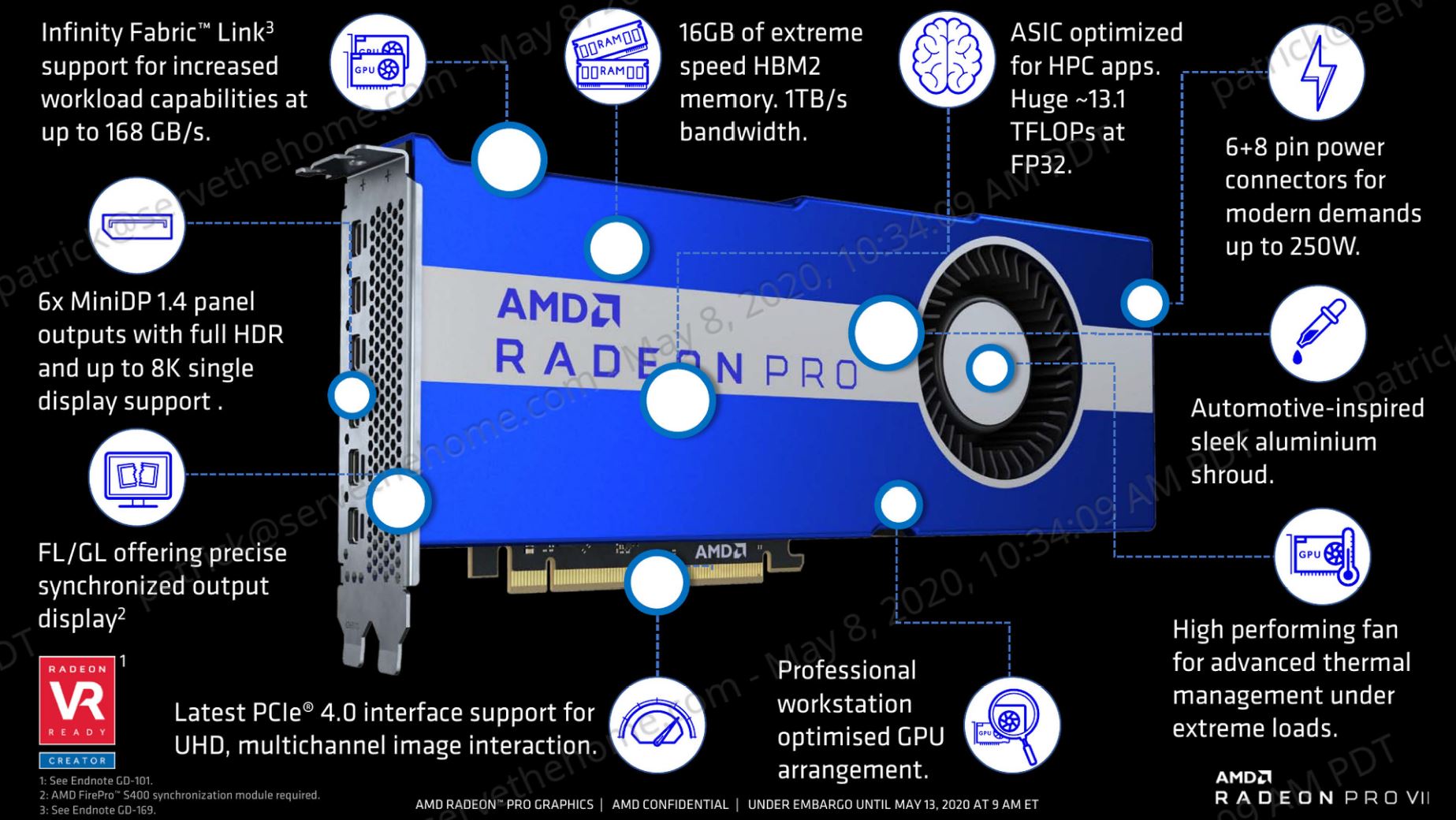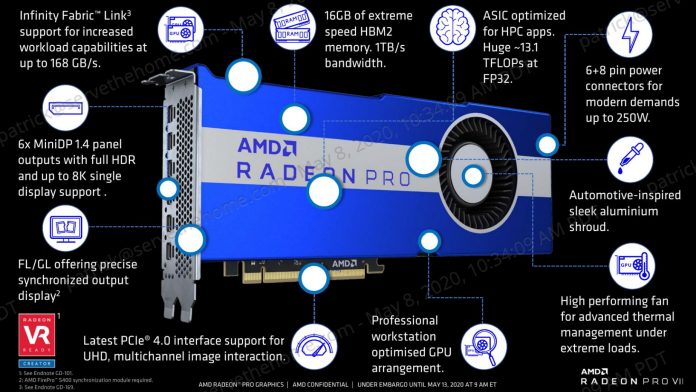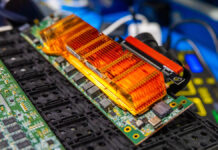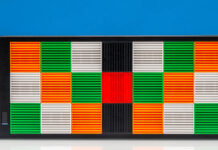The AMD Radeon Pro VII is surely a unique card. AMD is announcing a relatively monstrous GPU in the professional $1500-$2000 GPU segment. This is effectively either a professional version of the AMD Radeon VII or a desktop version of the Radeon Instinct MI50.
A pre-briefing for the Radeon Pro VII was unique if nothing else. First off, most on the call likely knew that the Radeon Pro VII was going out the day before NVIDIA GTC 2020. Usually, you do a launch like this the day before your competitor to disrupt their buzz or because you think there is a chance the next day will lead to your product not being competitive. Specs were sprinkled throughout the hour-long presentation filled with user personas. What we did not see, as an example, was a mention in this presentation is that this is a Vega 20 design. We pulled out some of the relevant details in a consolidated format.
AMD Radeon Pro VII Key Specs
Since these stats were scattered throughout a 40+ slide presentation (and some not there at all) we consolidated them into a shorter spec list. Some of the key stats of the Radeon Pro VII:
- Architecture: Vega 20
- FP32 TFLOPS: 13.1
- FP64 TFLOPS: 6.5
- Memory: 16GB
- Memory Bandwidth: 1TB/s
- ECC Memory: Yes
- PCIe: Gen4 x16
- Infinity Fabric Links: 2
- TDP: 250W
- List Price: $1899
Given the above, there is another way to think of this card. It is effectively the $699 Radeon VII in a “Pro” version and also above the AMD Radeon Pro W5700 we reviewed. Another way to view it is as a desktop version of the Radeon Instinct MI50. The feature set is closer to the MI50 with an active cooler rather than a passive cooler. This is a 250W card instead of a 300W card like its stablemates.

Overall, this is a big double-precision GPU with 1TB/s of HBM2 memory and PCIe Gen4. That makes it a very high-end card in the price range it competes in.
Beyond the raw specs, AMD was quick to point out that it is a much lower cost per double-precision TFLOP than a Tesla V100 or any of its instantiations. In a strange move, AMD also included the Quadro GP100 in the comparison which was released almost four years and three generations ago, then compared that to two Radeon Pro VII’s which are not yet available. Perhaps that was to show a generational upgrade, but we are not going to put comparison slides from a deck like that in our article.
Final Words
If you are looking for PCIe Gen4 FP64 PCIe compute performance, this may be the best option on the market now. The FP32 numbers are impressive, but NVIDIA’s Volta and Turing generations had already passed those marks. At $1899 with a blower-style cooler, this could be a lower-cost alternative for high-density AMD powered GPU servers versus getting the Radeon Instinct MI50 cards for FP64. We saw a similar trend when the GeForce GTX 1080 Ti was popular for similar FP32 price reasons in DeepLearning11.
One thing we know for sure, the NVIDIA GTC 2020 keynote tomorrow will be big. NVIDIA already showed off the NVIDIA Tesla A100 HGX-2 Edition in a teaser video. While AMD is comparing the Radeon Pro VII to the Quadro RTX line, such as the NVIDIA Quadro RTX 5000 we reviewed with the new GPU line coming, there is a good chance the competitive landscape will rapidly change over the coming weeks.





Jensen has to lower his prices tomorrow, thank you…
Yawn.
Misha Engel – why is that? because they have a Pascal level GPU in 2020? Nvidia does not think about AMD – they are a non issue.
WCCF misses you bob
@Bob Dobbs
Because it has 6.5 TFLOPS FP64 for a List Price of $1900 and you can glue 4 together via a 168 GByte/s infinity fabric connection.
GV100 has 7.4 TFLOPS FP64 for a List Price of ~ $8900.
GP100 has 5.2 TFLOPS FP64 for a List Price of ~ $7700.
That is a big price difference.
The GP100 has the same amount of memory (16GB) which effectively means that you can buy 4 Radeon pro VII’s for the price of 1 GV100.
Yes, it is a significant bargain properly utilized. Improperly utilized, it won’t run Doom Eternal any faster than an off the shelf Radeon VII or Vega 64, really.
The performance is double the Radeon VII but so is the price. The performance is about the same as the Titan V but only half the price. Other than these three cards, there are currently no others with decent FP64 performance that could be used by an engineer or scientist in a home or office computer for developing code, building experience, learning and small numerical runs. In my opinion this card is an important strategic move that will allow many people to write code for the upcoming AMD-based exascale machines.
Misha
Infinity Fabric? You mean the follow up to the tech they licensed from DEC and called it Hyper Transport? The new V3 of NVlink in the new Ampere products already does that an so much more. I realize this started before the Nvidia presser today.. which shows even more clearly that those PCI cards are not monsters, and are not contenders. Thing about cost, is it is often a minor consideration in this market. When we installed our 2 DGX-2 (16xV100 each) – the smallest consideration was price – we had a target to reach as far as processing capabilities – coming from the previous generation – that target was either to reduce the time to complete a run / workflow or to keep the same time frame and increase fidelity – the same considerations we are weighing tight now – again, cost is only a metric for people who buy 1 or 2 of these cards, and if their work requires CUDA then the AMD is moot.
The AMD lacks one serious component – and that cannot be overcome by price – and that is a massive ecosystem built around CUDA which makes the AMD useless to those customers.
On a one or two or even 4 GPU config – I am sure these will fit the bill for some customers – you get past that and you get into the 4xSXM and 8xSXM from Nvidia and Inspur – there is no comparable system from AMD. AMD talks about Infinity Fabric – but Nvidia has 1.6TB/s bi directional which turns the connected GPUS into a single system… not several PCI cards in aq system, hopefully working together.
Trollbegone
What is “WCCF”?
When your work requires CUDA you run off the shelf software, lot’s of researcher don’t. No current software run by research institutes need CUDA, they program the software themselves.
I don’t care how AMD got Infinity Fabric, I know that it works pretty efficient and fast on the Radeon Pro VII cards compared to NVidia’s NVLink on way more expensive RTX Quadro’s and Tesla cards. Scientific workloads need FP64 and with these cards, that is a hell of a lot cheaper than with any other current component (incl. A100 from NVidia).
This is not a card ($1900) that you should compare to a $200.000 system with AMD EPYC Rome CPU’s in it. The upcoming CDNA 2.0 should compete with the A100 cards.
Frontier and El Captain are a different league and reduce current A100 systems to a thing of the past, that is the beauty of competition.